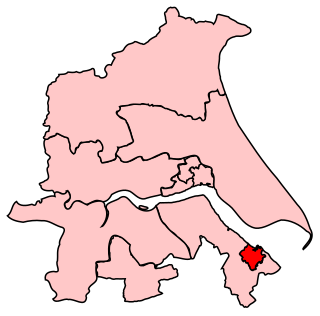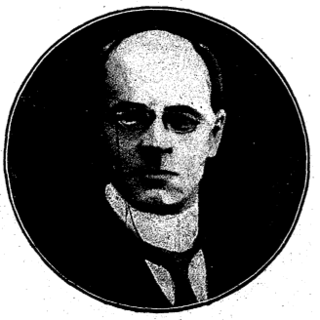South Ayrshire was a county constituency of the House of Commons of the Parliament of the United Kingdom from 1868 until 1983, when it was abolished. It returned one Member of Parliament (MP), elected by the first past the post voting system.

Paddington North was a borough constituency in the Metropolitan Borough of Paddington in London which returned one Member of Parliament to the House of Commons of the Parliament of the United Kingdom, elected by the first past the post voting system. It was created in 1885, and abolished for the February 1974 general election.
The Bolton by-election, 1912 was a parliamentary by-election held for the British House of Commons constituency of Bolton in Lancashire on 23 November 1912. Bolton returned two Member of Parliament to the House of Commons of the United Kingdom, elected by the first past the post voting system.
The Hanley by-election, 1912 was a by-election held for the British House of Commons constituency of Hanley on 13 July 1912.

Robert J. Cox FRSE was a Scottish gelatine and glue manufacturer and Liberal Unionist politician.
The Kilmarnock Burghs by-election was a Parliamentary by-election held on 26 September 1911. It returned one Member of Parliament to the House of Commons of the United Kingdom, elected by the first past the post voting system. The constituency consisted of five parliamentary burghs: Kilmarnock in the county of Ayr, Dumbarton in the county of Dumbarton, Rutherglen in the county of Lanark and Renfrew and Port Glasgow in the county of Renfrew.
The Wick Burghs by-election was a Parliamentary by-election. It was a Scottish Highland constituency that returned one Member of Parliament to the House of Commons of the United Kingdom, elected by the first past the post voting system. The constituency was a district of burghs representing the parliamentary burghs of Cromarty, Dingwall, Dornoch, Kirkwall, Tain and Wick. The by-election took place during the third anniversary of the Liberal Government's re-election of December 1910. It was thought to be a key indicator to the outcome of the following general election anticipated to take place in 1914-15.

The Great Grimsby by-election was a Parliamentary by-election. It returned one Member of Parliament to the House of Commons of the United Kingdom, elected by the first past the post voting system. It was one of the last by-election contests to take place before the outbreak of war, and provided a good indicator of how the main parties would have performed at an anticipated 1914/15 general election.
The Leith Burghs by-election was a Parliamentary by-election. It returned one Member of Parliament to the House of Commons of the United Kingdom, elected by the first past the post voting system.
The Midlothian by-election was a Parliamentary by-election. It returned one Member of Parliament to the House of Commons of the United Kingdom, elected by the first past the post voting system.
The Edinburgh South by-election, 1910 was a parliamentary by-election held for the House of Commons constituency of Edinburgh South in Scotland on 29 April 1910.
The Manchester North West by-election was a Parliamentary by-election held on 8 August 1912. It returned one Member of Parliament to the House of Commons of the United Kingdom, elected by the first past the post voting system.
The Inverness Burghs by-election, 1895 was a parliamentary by-election held on 31 August 1895 for the House of Commons constituency of Inverness Burghs, which was made up of the towns of Inverness, Fortrose, Forres and Nairn in the Scottish Highlands.
The Aylesbury by-election, 1899 was a parliamentary by-election held for the House of Commons constituency of Aylesbury in Buckinghamshire on 6 January 1899.
The Whitby by-election was a Parliamentary by-election. It returned one Member of Parliament to the House of Commons of the United Kingdom, elected by the first past the post voting system.
The North Dorset by-election was a Parliamentary by-election. It returned one Member of Parliament to the House of Commons of the United Kingdom, elected by the first past the post voting system.
The St Andrews Burghs by-election was a Parliamentary by-election. It returned one Member of Parliament to the House of Commons of the United Kingdom, elected by the first past the post voting system.
The Cambridge University by-election was a Parliamentary by-election. It returned two Member of Parliament to the House of Commons of the United Kingdom, elected by the first past the post voting system.

The Hampstead by-election was a Parliamentary by-election. It returned one Member of Parliament to the House of Commons of the United Kingdom, elected by the first past the post voting system.












